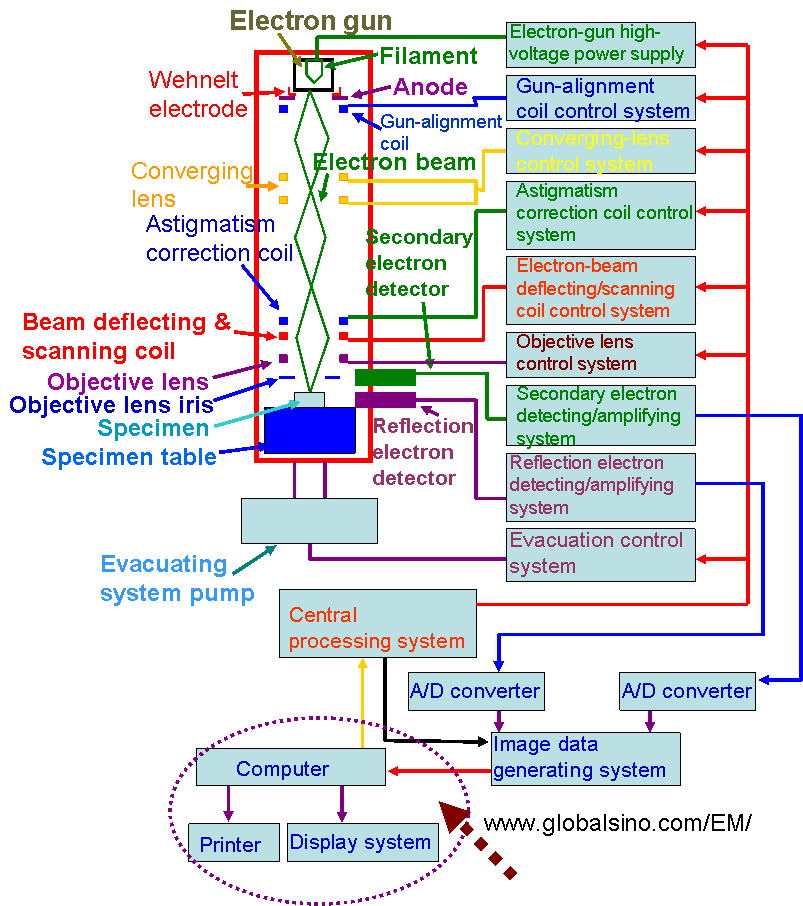=================================================================================
The modern electron microscopes (EMs) are highly versatile and normally controlled by computer functions on the illumination conditions, the detection configurations (diffraction and image), and many other tunable parameters such as accelerating voltage, beam current, beam tilt, defocus, spherical aberration constant, specimen position, orientation, pixel size of the camera, etc.
Functions of some parts in SEM shown in Figure 4231:
Filament – Emitting the electron beam.
Anode – Controlled by an electron-gun high-voltage power supply.
Converging lens – The electron beam is converged narrowly by a condenser coil as the converging lens is controlled by a converging-lens control system.
Astigmatism correction coil – The converged electron beam passes through the astigmatism correction coil, which is controlled by an astigmatism-correction coil control system, to control a beam shape.
Objective lens iris – To decide a beam divergence angle of the electron beam to reach a specimen.
Electron-beam deflecting/scanning coil – Is controlled by an electron-beam deflecting/scanning coil control system.
Objective lens – Is controlled by an objective lens control system.
Electron beam – Is scanned on the specimen by the electron-beam deflecting/scanning coil control system.
Detected information signal – Is amplified by a secondary electron detecting/amplifying system and then A/D-converted by an A/D converter.
Image data – Is supplied to the computer, then displayed on the display system such as a monitor or printed by the printer.

Figure 4231. Example of computer-controlled EMs: SEM system.
Moreover, electrons from the gun do not always pass through the center of the lens system, so that correction is made by controlling the gun-alignment coil with a gun-alignment coil control system.
In modern EMs, by taking advantage of computer control, it is convenient to switch between different operation modes, such as SEM, STEM, bright-field and dark-field TEM, nanobeam electron diffraction (NBED), and CBED, once their lens settings have been preset.
The columns of high voltage TEMs are normally higher than 3 m so that the aperture drives and specimen airlock are difficult to reach during microscope operation. Fortunately, computer or remote control devices are provided for modern microscopes; otherwise, a ladder is needed.
For TEM, all computers with fans should be moved out of the room because the fans release and move heat around the room.
|
